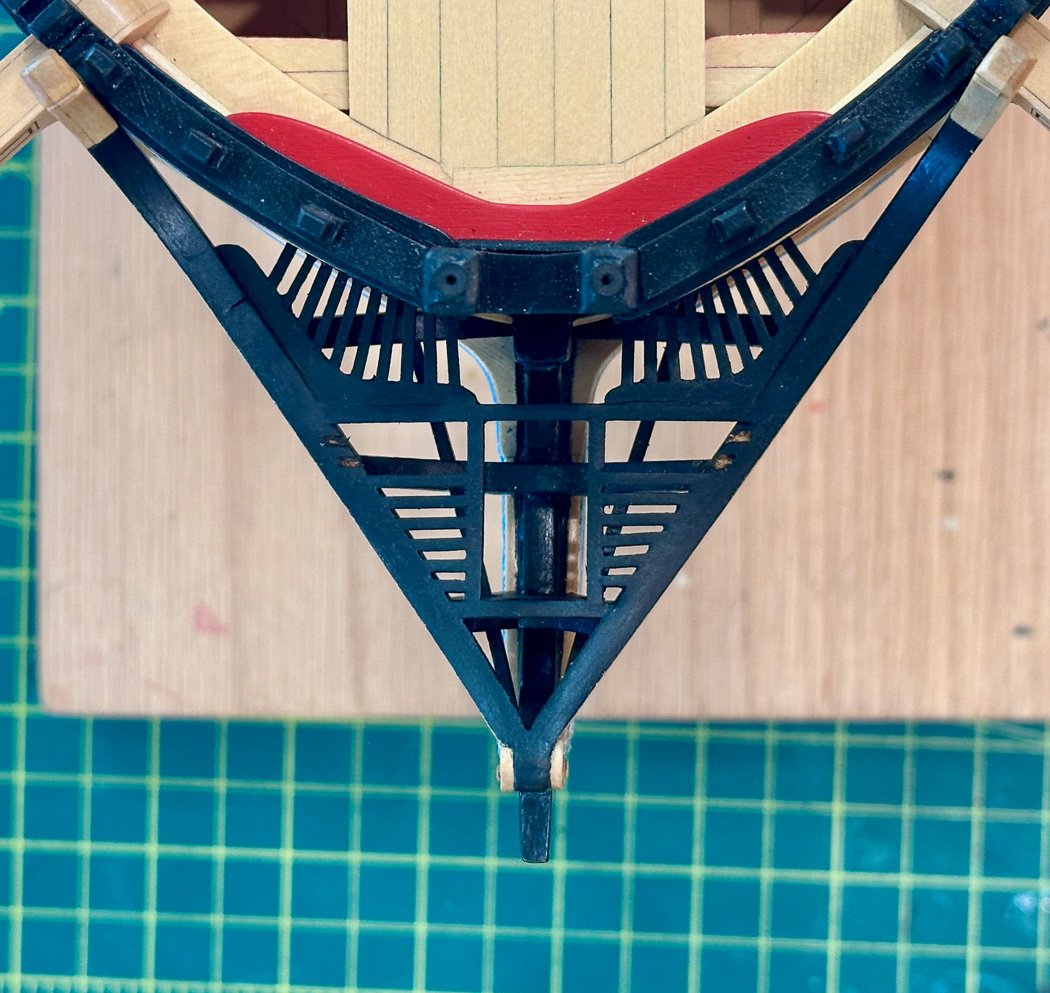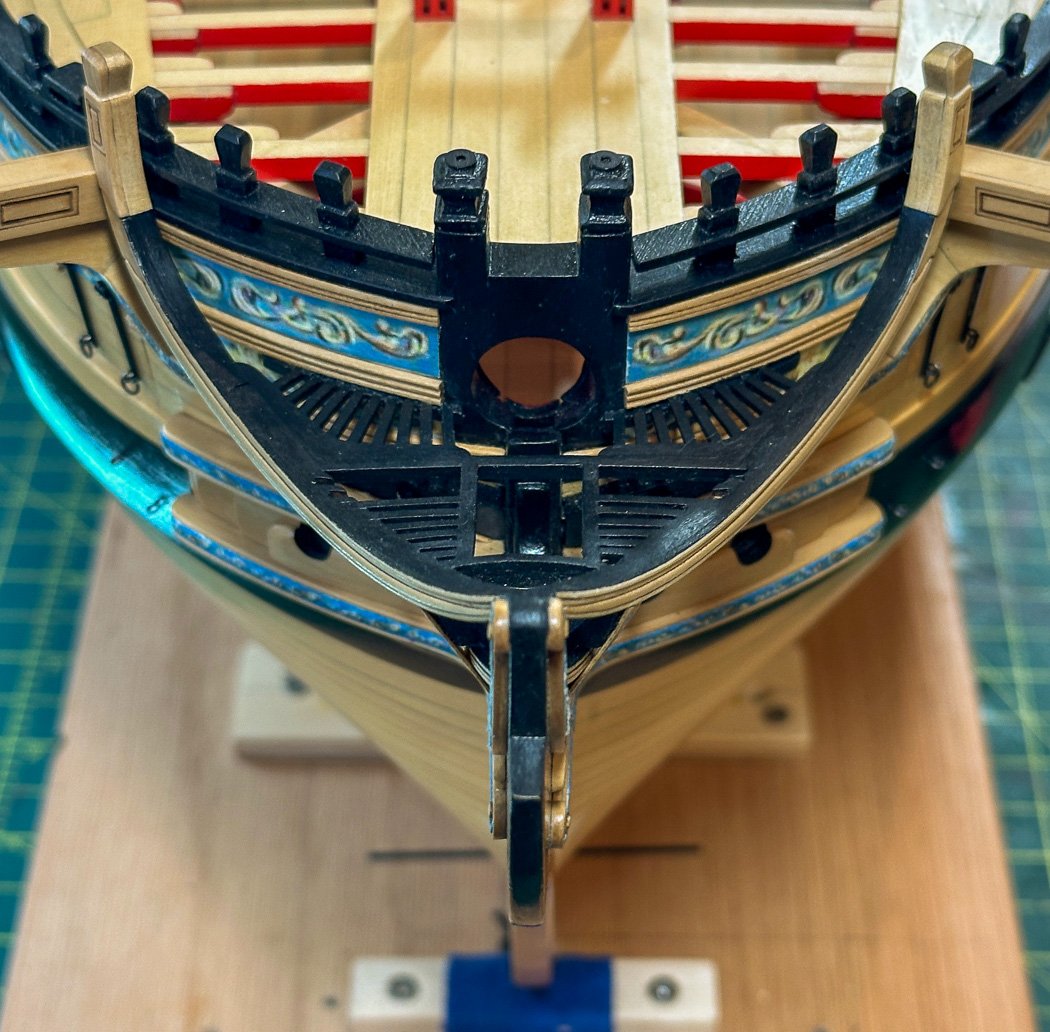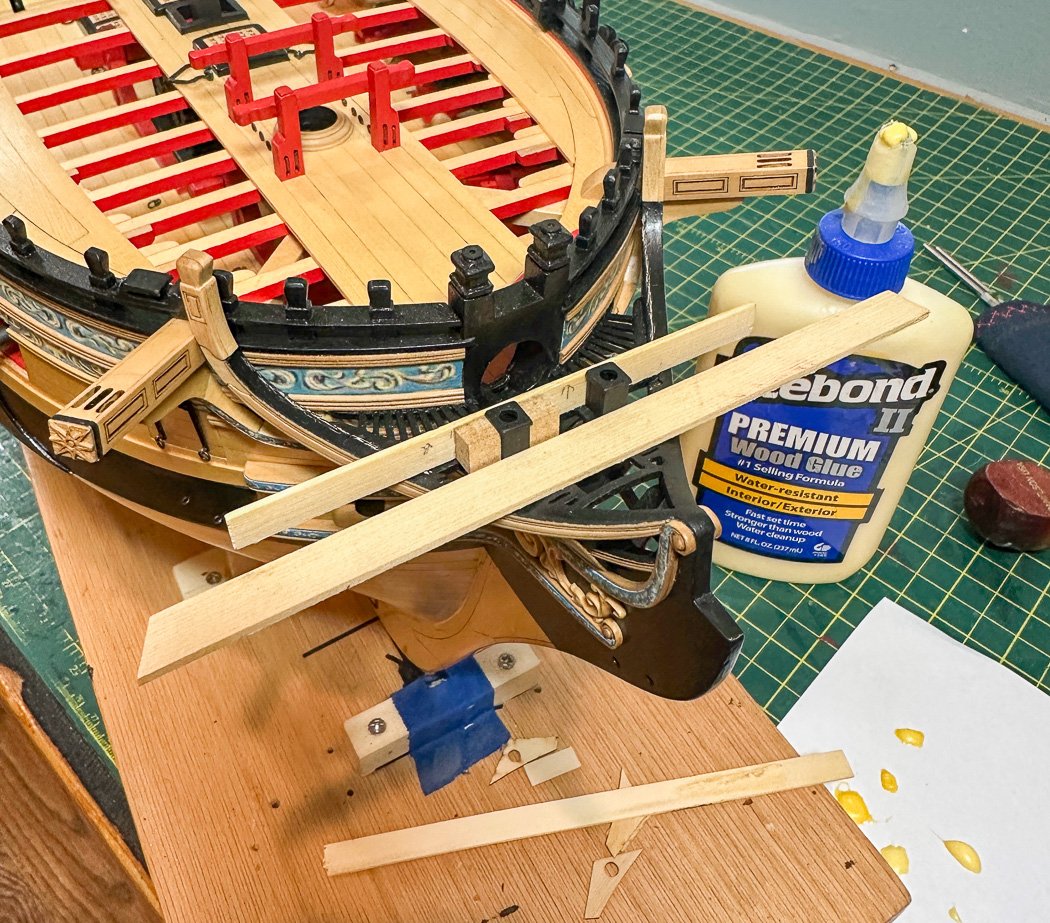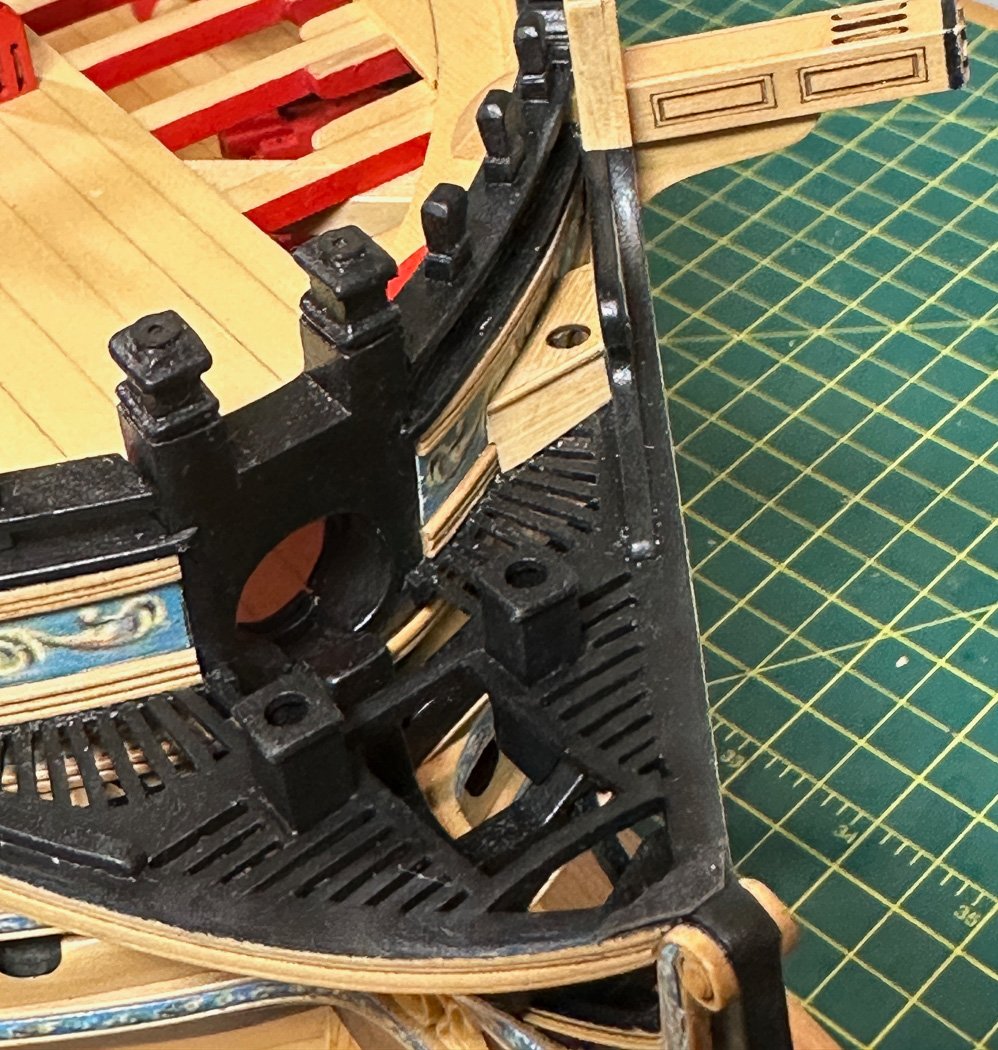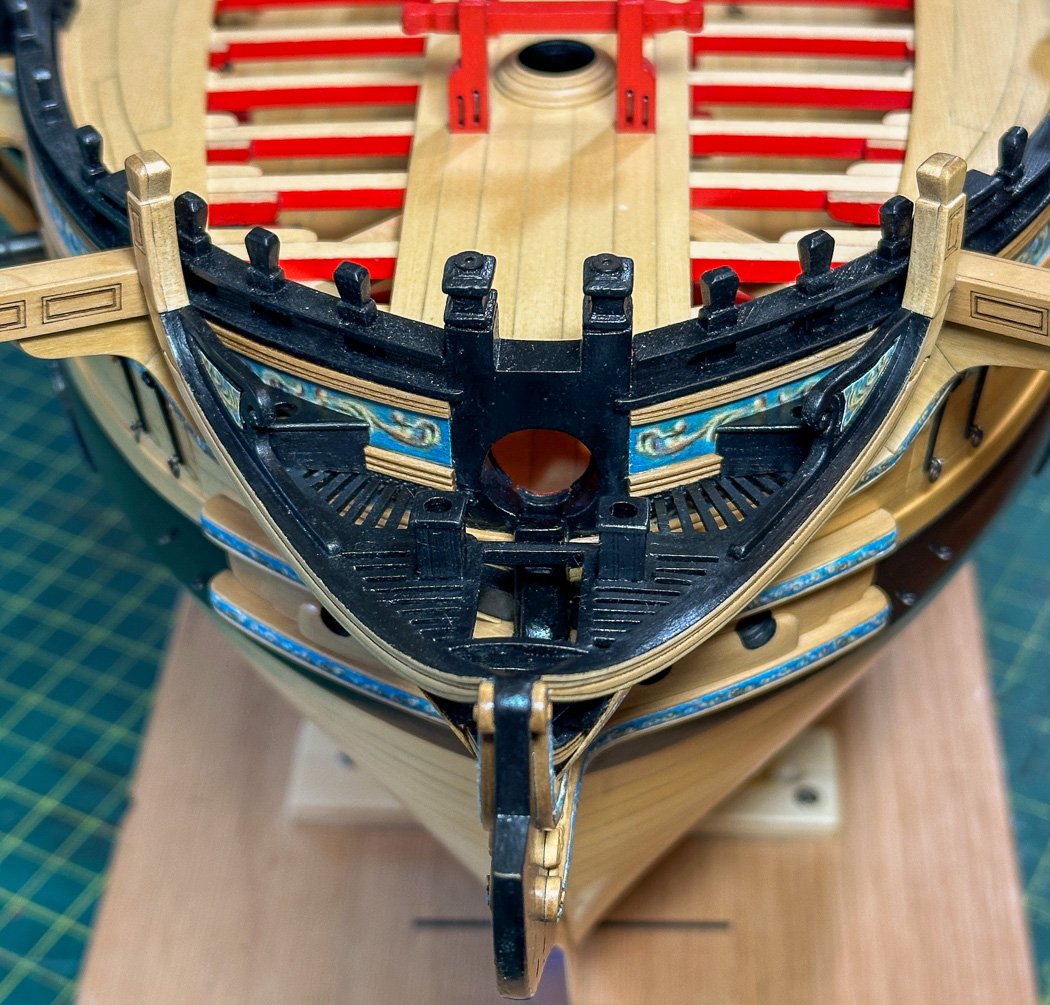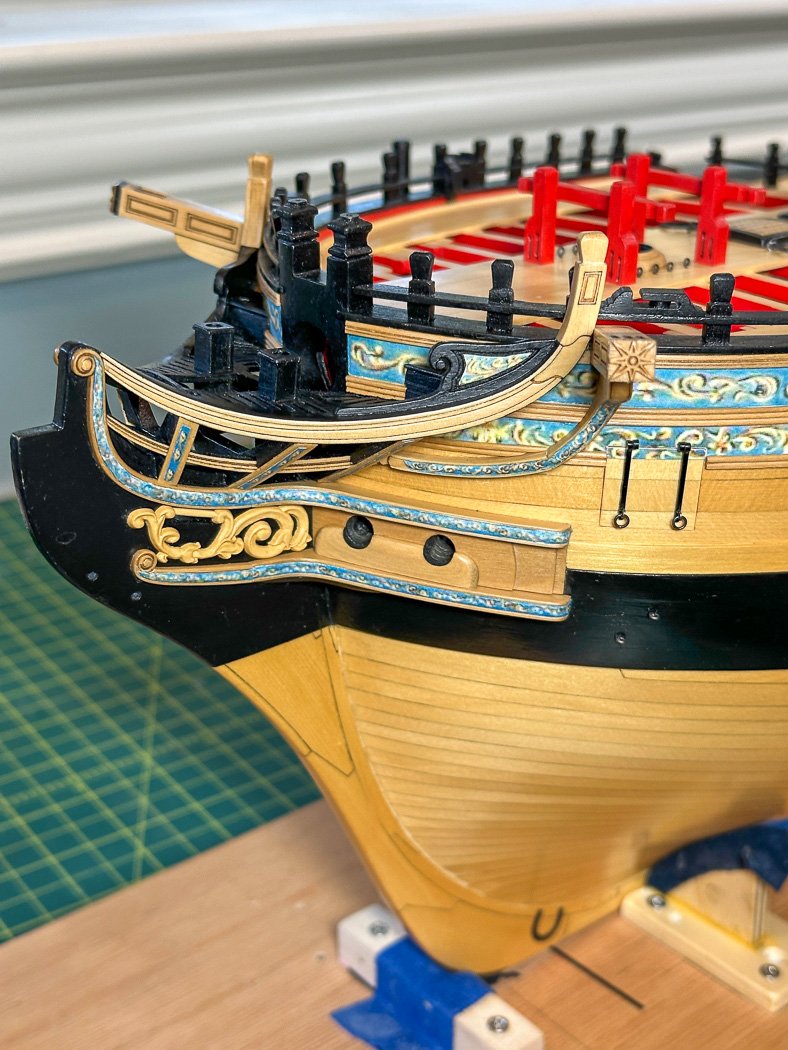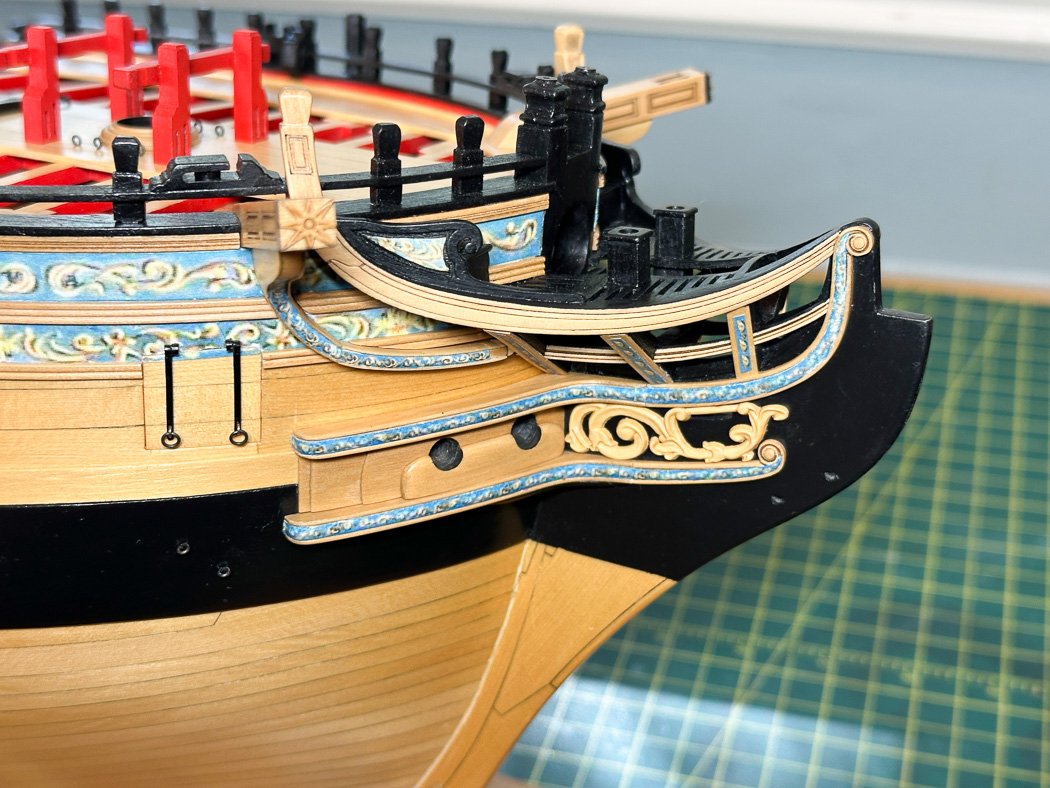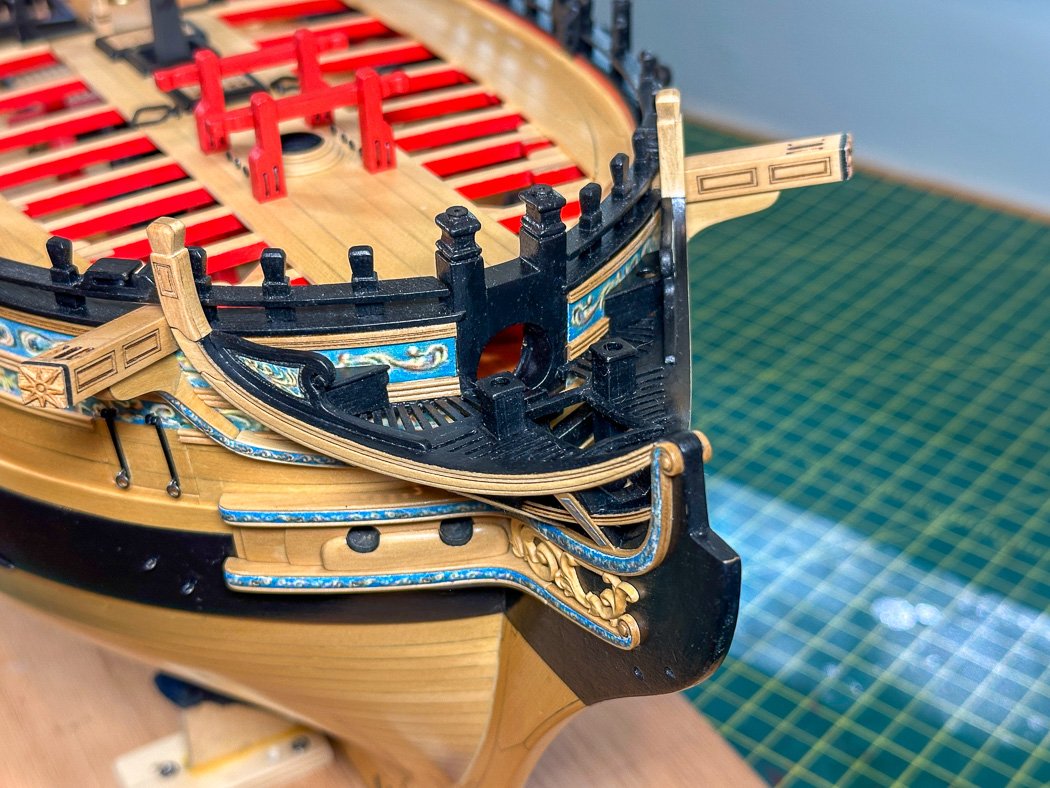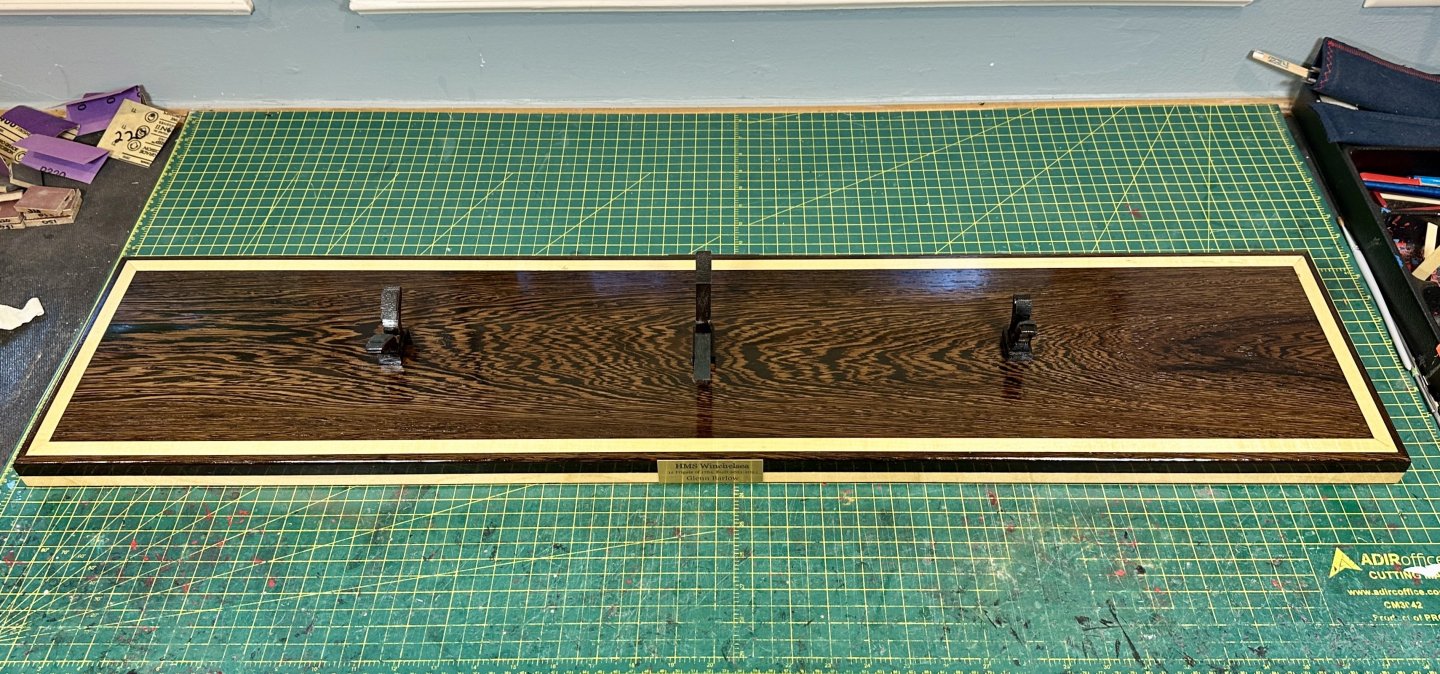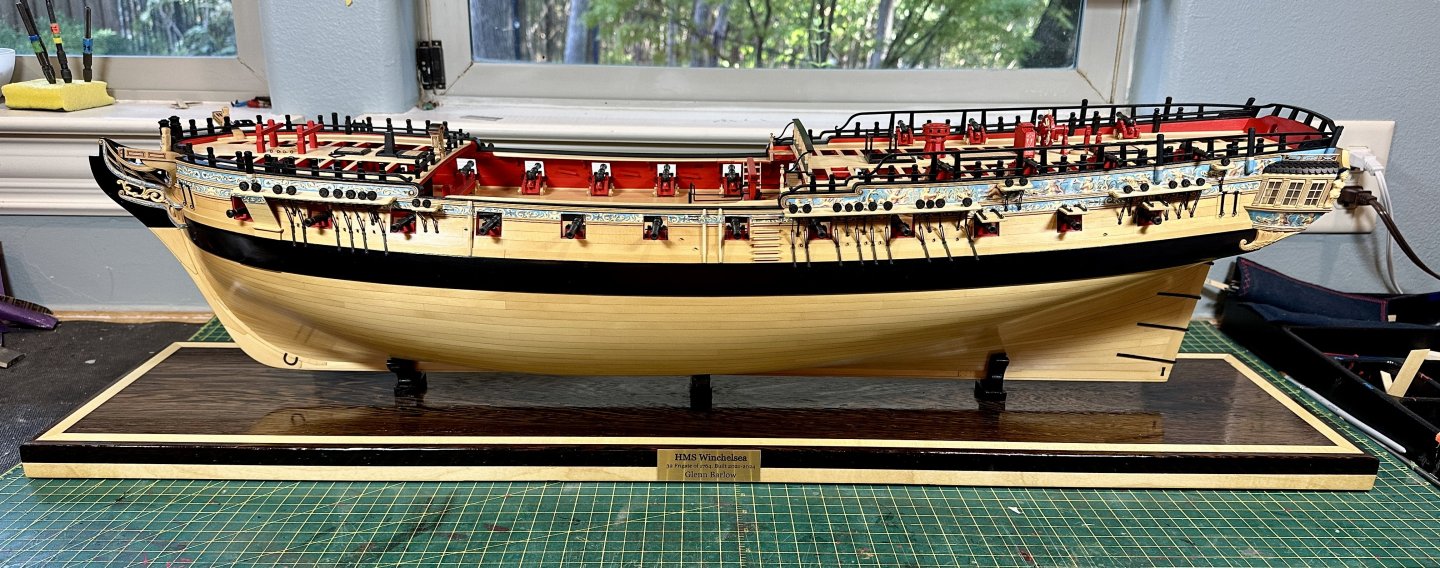-
Posts
4,115 -
Joined
-
Last visited
Content Type
Profiles
Forums
Gallery
Events
Everything posted by glbarlow
-
The all natural wood approach is bold and interesting. Well done!
- 399 replies
-
- winchelsea
- Syren Ship Model Company
-
(and 1 more)
Tagged with:
-
Gotta love building more cannon. Great work on chapter 9.
- 399 replies
-
- winchelsea
- Syren Ship Model Company
-
(and 1 more)
Tagged with:
-
Thanks Ben, much appreciated from a fellow builder.
- 840 replies
-
- winchelsea
- Syren Ship Model Company
-
(and 1 more)
Tagged with:
-
Thanks Chuck. Doing my best to do justice to a great design.
- 840 replies
-
- winchelsea
- Syren Ship Model Company
-
(and 1 more)
Tagged with:
-
Cathead Supports - Head Gratings & Poop Chutes It’s been a minute. I have spent four months on Chapter 12, though the shop has been closed or not visited about half of that with travel and family time. It’s almost like I forgot the rest of model with my total focus on the small real estate forward of the bollard timbers for so long. Look, there are cannons back there. Cathead Supports: Tweaking. A word we modelers use a lot. Not to be mistaken for Tweakers, which is a whole different thing. For me Chapter 12 has been a whole lot about tweaking. Tweaking taken to a whole other level. Nothing much to add other than sand and shape, test fit, followed by more sand and shape, test fit, and repeat. I removed two levels of moulding at the bow to get a better fit. I so enjoy the trauma of removing it without destroying the hull finish or ripping up the friezes. Not to mention the fun of getting them back on inside what has become a tight space. Head Gratings: When I first saw photos of head gratings by those who went before me I wondered how it all fit together or more precisely how I’d fit it all together. More, a lot more, of the required tweaking is how. The gratings consist of 46 separate little pieces of wood, each and every one custom fitted one by one by one. It’s also when you learn just how important was the measuring, sizing, squaring up, leveling, and fitting done in Chapters 1-5. There was a little variance I was able to account for by adjusting and sanding a few of the pieces, the goal is symmetry and visual match of the two sides, a little of here and there isn’t noticed. the important visual element being those first gratings either side of the bowsprit be equal-distant apart. It takes a great deal of time to make it all work, cutting each of those little pieces for a tight fit. It took a long while, but it’s worth it in the end. Poop Chutes: Speaking of taking time. While the forward two to just took a little squaring up to assemble I had to take care to center, align the height from the grating, and square them up to each other. I made a simple jig to manage this, it worked out quite well. The lid sits above the jig side pieces to create a total height of 5/16. It, along with the front piece, squares it on all four sides and with its partner. I still have to think how challenging it would have been to use these on the high seas, I think I’d wait on the back, more sheltered two myself. Good time to point out I elected to use Titebond II for all the head gratings and poop chutes. I needed the setup time it provides to adjust positioning and holding power, not too short like CA, not too long like white PVA. Plus it’s stronger than the wood once it’s dry. Although only two pieces the rearward two seats take a lot of time and patience to fit with the various angles. Like the forward two they need to appear identically aligned with the gratings and false rail, a few adjustments creates that look. The reward, as with the rest of the model, is the historical accuracy and detail that Chuck has built into this design. Now to remove some of the dust. Can’t say I want to fit head timbers again anytime soon, though I sure do like the way it all ties together. Also I’m not taking much time with my iphoneograhy. The glare is bad lighting, the model in reality does not have the shine seen in the photos, the white balance is all over the place. Thanks for stopping by with your likes and comments - I’m ever closer to the completion, only the bumpkins and lantern to go.
- 840 replies
-
- winchelsea
- Syren Ship Model Company
-
(and 1 more)
Tagged with:
-
I’d say go with the plans, however from a model perspective six of typical hand pumps around what appears to be the mast would result in a very crowded look and likely make rigging more challenging than it needs to be so my input is chain pumps. They are a nice look on a deck. …..later after the refit, seeing his men jammed together trying to pump out water Aubrey replaced the hand pumps…
-
My friezes look great as they are printed then sprayed as described in Chuck’s instructions. I’m not sure how paint on paper would hold up over time, but then I’ve never tried it. I was skeptical of the paper friezes at the start, but now two-three years since I applied them I’m more than happy with the result. However it’s your model and you should do as you wish, conducting experiments is always a good plan.
-
Any hardware store. And correction. Denatured alcohol (also used as camp stove fuel) not isopropyl alcohol
- 129 replies
-
- vanguard models
- Sherbourne
-
(and 1 more)
Tagged with:
-
Isopropyl alcohol is useful in loosening white/ yellow glue (not CA) glue, a modelers best friend, a better than sawing. Isolate the area with paper towels, apply it with a dropper and give it seconds not minutes to work. It may take more than once for yellow glue, white PVA separates quickly. Never be reluctant to remove, back up, restart, replace. These are wood models, not assemble in place plastic ones. Wood is very forgiving if treated carefully. I’ve backed up on hull planking that I often feel like I’ve planked three sides of a hull. Often laser cut parts are cut a little big on purpose to allow for variations in each build, no two models are the same. You can sand it smaller, can’t make in bigger. As pointed out getting the ‘infrastructure’ or bones of the model correct is crucial to your enjoyment at later stages. Vanguard models are excellent, both for quality of parts and depth of instruction. You’re off to a good start. Have fun. Although without Chris’ skill and while I have that mouse sander I rarely use it for fear of losing the symmetry of the hull. I just sand away by hand.
- 129 replies
-
- vanguard models
- Sherbourne
-
(and 1 more)
Tagged with:
-
I agree with Rusty, there is always another model that needs building. Two dozen has a nice ring.
- 131 replies
-
- Medway Longboat
- Syren Ship Model Company
-
(and 1 more)
Tagged with:
-
I acquired some different thin and wedge shaped files from a jewelry making website for my breast rail columns, spent a lot of time on those, more than six.
- 399 replies
-
- winchelsea
- Syren Ship Model Company
-
(and 1 more)
Tagged with:
-
Another great build. I’ve followed yours going back to Pegasus I think, they are all so wonderfully build and so fully documented. I really like the clever display for this one. I hope to see you back at it soon.
- 131 replies
-
- Medway Longboat
- Syren Ship Model Company
-
(and 1 more)
Tagged with:
-
This Helping Hands is an essential tool for all rigging in my opinion. This link is for US Amazon, I’m sure they are available elsewhere online. They come in multiple sized base plates with different types and amount of arms. I like this smaller plate with four arms, I later acquire a fifth arm. I used to use a cheap smaller version, this one though was a game changer for my rigging, makes it all much easier. You have many seizings in your future. I think it was when I built Cheerful I first used it, post 669 and 706 among others show it in action.
-
Please ignore the poor photography and messy work bench. My “big wood” artist friend has completed the stand and future home for my Winchelsea. Note how the grain imitates the bow breaking the water. He intentionally selected this piece of wood for that reason. The maple inlay compliments the cedar as does the African Wenge compliment the colors of the ship. You know the Byrnes thickness sander many of us have? He has the big boy version, he ran this piece through it multiple times, routed out the edges for the inlay then ran it through several more times. I wasn’t sure about the lacquered finish until we set the ship on it. It reflects the underside of the boat, so that bottom planking isn’t lost from sight after all, an extra dimension for viewing. We had multiple ‘fittings’ to get the brackets just right, they are a work of art by themselves, carved from the same Wenge as the base. I’m really excited by the time and expertise Bill put into this. Really nice to have a friend with these skills, far beyond anything I could do and a perfect home for my Winchelsea. Now I just have to get back in the workshop to finish it.
- 840 replies
-
- winchelsea
- Syren Ship Model Company
-
(and 1 more)
Tagged with:
-
Thos logs should so there is an upper counter that meets the lower counter at that angle bend on the frames. Hard to know from photos but it seems your’re a bit low. Try a temporary plank for the upper counter, they have to match up. Maybe look later in other logs or a few pages ahead in the monograph to see the finished look. also keep in mind the planks have to curve to meet the lower counter. Your angle for that and the filler as you have it might make that tough. This is a challenging area, worth it to get it right. I'm closing in on four years…its a process.
About us
Modelshipworld - Advancing Ship Modeling through Research
SSL Secured
Your security is important for us so this Website is SSL-Secured
NRG Mailing Address
Nautical Research Guild
237 South Lincoln Street
Westmont IL, 60559-1917
Model Ship World ® and the MSW logo are Registered Trademarks, and belong to the Nautical Research Guild (United States Patent and Trademark Office: No. 6,929,264 & No. 6,929,274, registered Dec. 20, 2022)
Helpful Links
About the NRG
If you enjoy building ship models that are historically accurate as well as beautiful, then The Nautical Research Guild (NRG) is just right for you.
The Guild is a non-profit educational organization whose mission is to “Advance Ship Modeling Through Research”. We provide support to our members in their efforts to raise the quality of their model ships.
The Nautical Research Guild has published our world-renowned quarterly magazine, The Nautical Research Journal, since 1955. The pages of the Journal are full of articles by accomplished ship modelers who show you how they create those exquisite details on their models, and by maritime historians who show you the correct details to build. The Journal is available in both print and digital editions. Go to the NRG web site (www.thenrg.org) to download a complimentary digital copy of the Journal. The NRG also publishes plan sets, books and compilations of back issues of the Journal and the former Ships in Scale and Model Ship Builder magazines.




